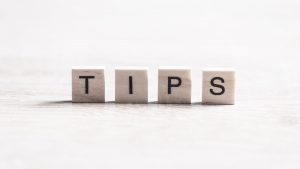The migraine attack is a chemical and electrical storm in the brain
Many zones of the brain are active during an attack. We now have scientific evidence that migraine [1] pain comes from pain nerves around the meninges. The aura [2] is caused by a wave of electricity on the brain’s surface. The prodrome [3] (cravings, fatigue, and neck pain) may come from a zone called the hypothalamus.
The symptoms of the attack may vary a lot from one person to the other.
Is there an aura [2]? A prodrome [3]? Lots of nausea? Or is dizziness [4] the critical issue? How fast does the attack start? Maybe your attack starts with neck pain, sinus pain, eye pain…everything is possible.
The same person may have different types of attacks
Some people with migraine report that all their attacks are the same, but many others report 2, 3 even more types of attacks. Sometimes, different triggers will lead to different attacks. For example, the menstrual attack may be worse, and the attack triggered by neck tension may feel different than the one triggered by strong smells.
Any person with migraine who has a headache that’s different than the usual attacks should consider seeking medical advice
If you suffer from migraine, you are used to headaches. But you may one day have a headache that is not a migraine but a sign of another health issue. Any sudden onset (thunderclap) headache or unusual symptoms should justify a visit to the emergency department.
If you have chronic migraine, separating the attack from your baseline may become difficult
People with chronic migraine [5] (CM) have very few headache-free days per month (See this post [6]). Some have a headache every single day. For some, this baseline headache looks like a mild migraine, and it becomes difficult to know when an attack is starting.
Migraine attacks tend to occur more frequently during sleep as we age
According to research, migraine attacks occurring during the night or early morning become more frequent after the age of 30. Sleep patterns change over the lifespan, and this seems to impact migraine. Remember that headaches linked with sleep may have other causes that should be evaluated by a physician (See this post [7]).
Treating early increases the chances of controlling the attack
For many reasons, most people with migraine tend to treat their attacks too late. Follow the Treat Early principle, and see if your success rate increases. (See this post [8])
Some migraine attacks may require a combination of two medications
The chemical inflammation [9] of migraine may require a stronger approach. The Canadian Headache Society Guidelines recommend combining NSAIDs and triptans [10] if only one is insufficient. Anti-nausea drugs may be added as needed. (See this post [11])
Pills sometimes are not enough. For severe attacks, consider other options that bypass the gut
Nasal sprays, injections, suppositories, and even neuromodulation devices may be used if the pills do not work or there is severe nausea. Options with a faster onset can sometimes be more effective in interrupting the migraine cascade in time. (See this post [12])
If you have frequent attacks, you should consider preventive approaches
The regular use of acute medications for migraine is associated with chronification (even more frequent attacks). Medication overuse headache is a complex problem, and if you see that you are heading that way, keep a diary and discuss preventive options with your healthcare provider. (See this post [6], this one [13], and this one [14])
REFERENCES
Mayans L, Walling A. Acute Migraine Headache: Treatment Strategies. Am Fam Physician. 2018;97(4):243-51.
Rapoport AM. Acute treatment of migraine: established and emerging therapies. Headache. 2012;52 Suppl 2:60-4.
Post#809
